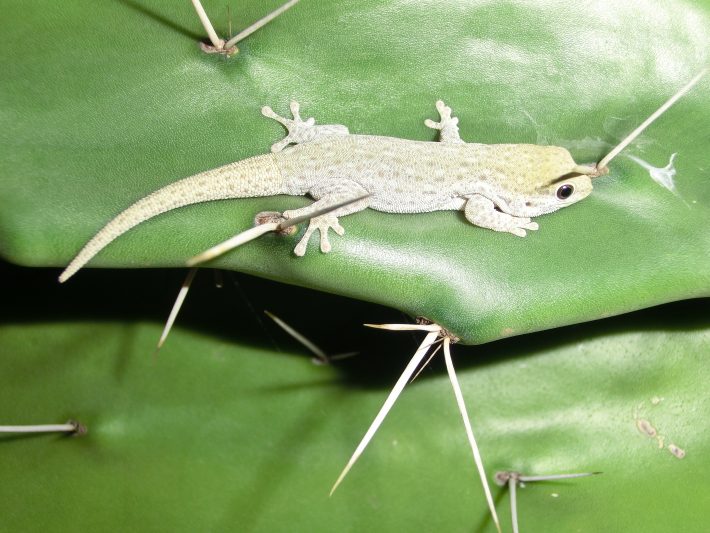Press Release: Hedges in agricultural areas protect biodiversity on Madagascar
Universität Hamburg Press Release
The diversity of animal and plant species is declining all over the world. Especially in Madagascar, known as a biodiversity hotspot, unique animal communities face dramatic losses of their natural habitats due to human activities. A team of researchers from Universität Hamburg has now investigated ways to combat this and published its findings in Journal of Applied Ecology.

The researchers from the working group “Animal Ecology and Conservation” studied the value of artificially created hedges for biodiversity conservation in the agricultural areas of southwestern Madagascar. They investigated the influence of various types of land use on reptiles, which are very diverse in the region. Among other things, slash-and-burn agriculture, livestock grazing, and non-sustainable logging jeopardize natural forests. One reason for this is a rapidly growing population’s increasing demand for resources.
The Hamburg study shows that artificially created hedges on field borders can contribute positively to biodiversity. For example, hedges provide habitat for a threatened species of Madagascar day geckos, Phelsuma breviceps. The study’s authors point out, however, that hedges need to be richly structured and connected to one another and the surrounding forest in order to provide a habitat to as many species as possible.
The study, conducted within the context of the “Sustainable Land Management in Madagascar” (SuLaMa) project funded by the Federal Ministry of Education and Research (BMBF), also addressed the question as to whether and how people in Madagascar should be induced to plant these hedges, thereby contributing to the preservation of biodiversity. In southwestern Madagascar, inhabitants live from husbandry and agriculture, extracting food and fodder, medicine, timber, and firewood from the natural ecosystem. Artificially created hedges protect cultivated fields from livestock (goats, sheep, zebu) and provide the population with resources that they can use in daily life, such as prickly pears. Nonetheless, further studies will be needed to determine to what extent prickly pears (cacti)—currently the main component of the hedges and introduced to Madagascar in the late 18th century—negatively affect the spread of native flora and fauna.
“The study shows that humans and the unique animal world can co-exist,” says Joachim Nopper, animal ecologist and research associate at Universität Hamburg. This is a positive finding, particularly for the local population. However, these cultivated areas do not constitute a fully-fledged substitute for undisturbed forests: “Creating landscape components such as hedges reduces negative effects on natural systems, but only in connection with extant forests can they effectively combat species extinction,” says Nopper. Thus, further SuLaMa subprojects are focusing on alternatives to land clearance and how sustainable agriculture can be implemented in Madagascar.
Link to original study:
Nopper, Joachim; Lauströer, Balten; Rödel, Mark-Oliver; Ganzhorn, Jörg U. (2016) A structurally enriched agricultural landscape maintains high reptile diversity in sub-arid southwestern Madagascar. Journal of Applied Ecology, doi: 10.1111/1365-2664.12752
More information about the project “Sustainable Land Management in Madagascar” funded by the BMBF at: www.sulama.de
Queries:
Joachim Nopper
Biozentrum Grindel
Animal Ecology & Conservation
Tel: +49 40 42838-8052
Email: Joachim.Nopper@uni-hamburg.de
Like what we stand for?
Support our mission and help develop the next generation of ecologists by donating to the British Ecological Society.